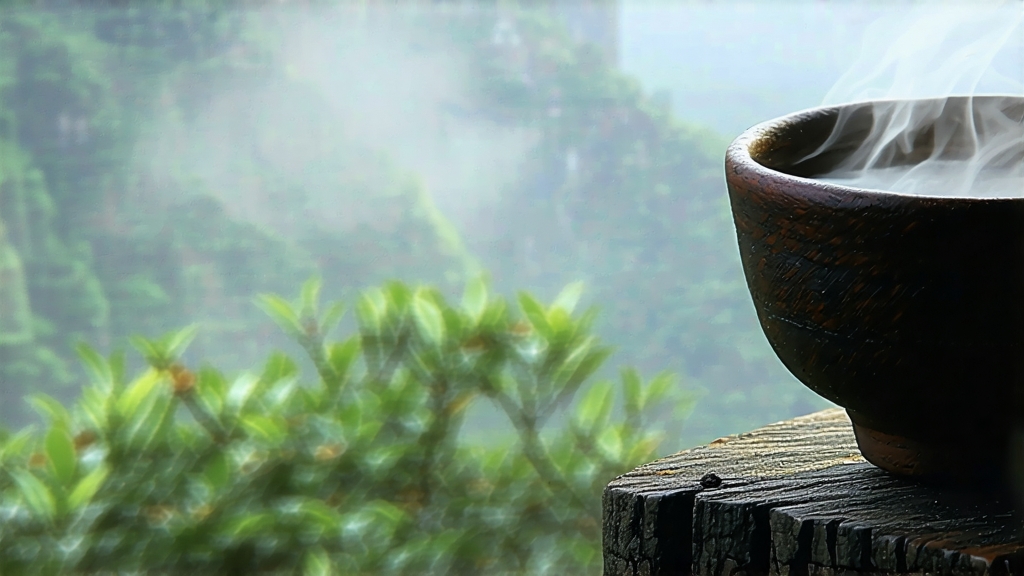
Tucked away in the humid, karst-pitted mountains of southern China’s Guangxi Zhuang Autonomous Region, Liu Bao cha has spent four centuries quietly perfecting the art of microbial alchemy. While Pu-erh has become the global shorthand for “dark tea,” Liu Bao is the older, subtler sibling—fermented, pressed, and aged in woven bamboo baskets that once traveled the Tea Horse Road into Southeast Asia. To international drinkers who equate China’s dark teas only with Yunnan’s bold, camphor-laced cakes, Liu Bao offers a softer, sweeter revelation: notes of dried longan, warm betel nut, and the forest floor after monsoon rain.
Historical footprints
The earliest written record appears in 1620, when the “Xu Xiake Travelogue” mentions “dark soup from Cangwu” (the old name for Wuzhou county) traded for salt and medicinal herbs. By the Qing dynasty, Liu Bao village—really a cluster of hamlets straddling the Liu River—had become a staging post for teas bound for Hong Kong, Malaya, and Indonesia. Coolies loaded 50 kg bamboo baskets onto bamboo rafts, floated them down the Liu to the Xi, then transferred to ocean junks at Guangzhou. In Kuala Lumpur’s old Chinatown, 19th-century tin miners drank Liu Bao to combat malaria and damp-lung; the British colonial medical journal of 1898 even lists “Lieu-Pow tea” as a recommended prophylactic. Thus, long before microbiologists isolated Eurotium cristatum, Liu Bao was already a transnational health beverage.
Micro-terroirs within one name
Today the protected geographical indication covers 24 townships, but connoisseurs recognise three micro-zones. The “mountain core” around Liubao town itself produces the most aromatic leaves thanks to morning cloud cover and iron-rich lateritic soil. Ten kilometres south, the “river valley” gardens yield broader leaves with higher polyphenols, ideal for decades-long aging. Further east, the “limestone ridge” terroir gives a mineral bite reminiscent of Wuyi rock oolong. Within each zone farmers distinguish “qunti zhong” (the old seed-propagated bush, small leaf, slow growth) from the 1950s-introduced “Yunnan large-leaf” clone that delivers darker liquor faster. Purists insist only qunti zhong deserves the Liu Bao name; yet both styles can age gracefully if craft is respected.
Crafting the darkness
Harvest begins in late April, when two leaves and a bud still wear their spring down. After a brief outdoor withering to reduce grassy notes, the leaves are wok-fired at 280 °C for eight minutes—long enough to kill green enzymes but short enough to retain surface microbes. Rolling follows the “dragonfly head” technique: light pressure to twist the leaf without rupturing every cell, preserving microbial entry points. The pivotal step is “dui wo,” the wet piling fermentation unique to dark teas. Liu Bao’s version is gentler than Pu-erh’s: leaves are stacked 40 cm high, misted to 28 % moisture, and covered with jute sacks plus a final blanket of rice straw that imparts a subtle hay sweetness. Internal temperature is kept below 55 °C for 18–24 hours; every two hours a master “tea doctor” inserts a bamboo probe, smells the rising steam, and turns the pile if fruity aromas tilt toward sour. Once the core leaves turn walnut-brown and the vein remains olive, the pile is broken up and sun-dried on bamboo mats for three days. A short steam press follows—just 30 seconds at 105 °C—softening leaves enough to fit into the traditional 40 kg bamboo baskets lined with wild banana leaf. Seven layers are tamped by foot, the basket mouth sewn shut, and the tea transferred to humid underground caves or above-ground “fermentation towers” where it will rest for a minimum of 180 days before market release. During this time Eurotium cristatum (the celebrated “golden flower”) blooms sporadically, weaving a faint medicinal honey note into the already complex cup.
From basket to cup: brewing rituals
Western drinkers often over-steep dark teas, expecting coffee-like body. Liu Bao rewards restraint. Start by breaking off 5 g from the basket’s edge—never the core, which is denser and needs extra months